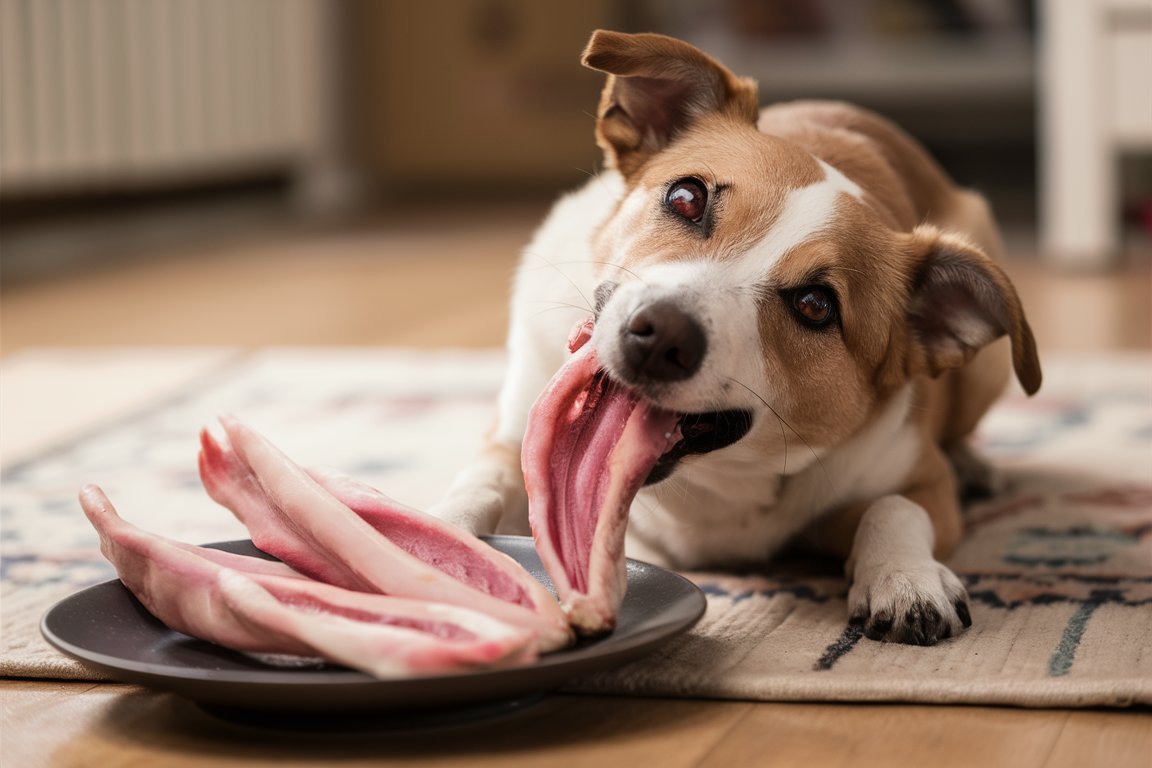Can Dogs Have Pig Ears? A Comprehensive Guide for Pet Owners
When it comes to treating our furry friends, dog owners are always on the lookout for something special. One popular choice that often pops up in pet stores is pig ears. But, can dogs have pig ears safely? In this article, we’ll dive deep into this question, exploring the benefits, risks, and what you need to know before giving your dog a pig ear treat.
What Are Pig Ears?
Pig ears are exactly what they sound like—dried ears from pigs that are processed into chew treats for dogs. These chewy snacks are loved by many dogs because they’re flavorful and easy to chew, making them a popular choice among dog owners.
Are Pig Ears Safe for Dogs?
The short answer is yes, but with some important considerations.
Benefits of Pig Ears for Dogs
- Dental Health: Pig ears are excellent for promoting dental health. The act of chewing helps to remove plaque and tartar from your dog’s teeth, which can reduce the risk of dental issues.
- Mental Stimulation: Chewing is a natural behavior for dogs and provides mental stimulation. Giving your dog a pig ear can keep them occupied for hours, reducing boredom and destructive behavior.
- High in Protein and Fat: Pig ears are rich in protein and fat, which are essential components of a dog’s diet. However, this also means that they should be given in moderation, especially for dogs on a calorie-controlled diet.
Risks Associated with Pig Ears
While there are many benefits, there are also some risks you need to be aware of:
- Choking Hazard: Like any chew treat, pig ears can pose a choking risk, especially if your dog tries to swallow large pieces. It’s important to supervise your dog while they enjoy this treat.
- Digestive Issues: Some dogs may experience digestive upset after eating pig ears. This can include vomiting, diarrhea, or gas. If your dog has a sensitive stomach, you might want to start with a small piece and observe how they react.
- Bacterial Contamination: There have been cases where pig ears were contaminated with harmful bacteria like Salmonella. It’s crucial to purchase pig ears from reputable sources that follow strict processing standards to minimize this risk.
How to Choose the Right Pig Ear Treat
Not all pig ears are created equal. Here’s what to look for when selecting pig ears for your dog:
1. Sourcing
Choose pig ears that come from reputable sources. Look for brands that source their pig ears from high-quality farms and follow strict processing standards to ensure they are safe for consumption.
2. Processing
Check if the pig ears are naturally processed without the use of harmful chemicals or additives. Ideally, they should be baked or dried slowly to retain their nutritional value.
3. Size and Shape
Pig ears come in various sizes. If you have a small dog, opt for smaller ears or break them into smaller pieces. For larger dogs, ensure that the pig ear is large enough to be chewed safely.
4. Storage
Proper storage is crucial to prevent contamination. Store pig ears in a cool, dry place, and always check for any signs of mold or spoilage before giving them to your dog.
Step-by-Step Guide: How to Introduce Pig Ears to Your Dog
If you’ve decided to give pig ears a try, here’s a step-by-step guide to ensure a positive experience for your dog:
Step 1: Start Slowly
Start by giving your dog a small piece of a pig ear to see how they react. Observe them for any signs of digestive upset or allergic reactions.
Step 2: Supervise Your Dog
Always supervise your dog while they are chewing on a pig ear. This is especially important the first few times to ensure they chew it properly and don’t try to swallow large pieces.
Step 3: Limit Frequency
Pig ears are high in fat, so they should be given as an occasional treat rather than a regular snack. Depending on your dog’s size and diet, limit pig ears to once or twice a week.
Step 4: Monitor Your Dog’s Health
After your dog has enjoyed their pig ear, keep an eye on their overall health. Look out for any signs of digestive issues or changes in their stool, and adjust the frequency of the treat accordingly.
Why You Should Consider Pig Ears for Your Dog
If your dog enjoys chewing and you’re looking for a natural, tasty treat, pig ears can be a great option. They offer numerous benefits, from promoting dental health to keeping your dog mentally stimulated. However, it’s important to be aware of the risks and take necessary precautions.
By choosing high-quality pig ears and following the steps outlined in this guide, you can confidently treat your dog to this delicious snack.
Where to Buy Quality Pig Ears
If you’re ready to buy pig ears for your dog, check out our recommended pig ears that meet the highest standards for quality and safety. Your dog will thank you for it!


One Reply to “Can Dogs have Pig Ears”